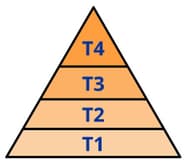Interrelationship between Components of a Habitat
Interrelationship between Components of a Habitat: Overview
This topic covers concepts such as Biotic Components of Ecosystems, Abiotic to Biotic Interaction, Biotic to Biotic Interaction, Decomposers, Trophic Levels, Producers in an Ecosystem, etc.
Important Questions on Interrelationship between Components of a Habitat
Choose the correct example of decomposers:
Decomposers can only degrade plant-based organic matter.
Microorganisms such as bacteria, fungi, etc that decomposed organic matter are called _____ (decomposers/scavengers).
What are decomposers and, how do they help in improving soil fertility?
Example of Abiotic factor:
Abiotic and biotic factors combine to create a system called _____ (ecosystem/hydrosphere).
The interaction between biotic and abiotic factors is called an ecosystem.
Define briefly what is abiotic and biotic interactions.
Which of them comes under biotic interaction:
Decomposers is an example of biotic biotic interactions.
_____ (Decomposers/Scavengers) such as bacteria and fungi is an example of biotic interaction.
Explain what is biotic to biotic interactions?
Which of the following is a biotic component of the ecosystem?
In natural ecosystems, decomposers are
In natural ecosystems, decomposers include_________.
The major contributors to the acid rain are known as______.
In a pond, the primary producer is a green alga, spirogyra; the primary consumer is the crustacean, Daphnia; the secondary consumer is a small fish, the bluegill; and the tertiary consumer is a larger fish, the smallmouth bass. what changes can be expected in the pond if the Daphnia are killed with pesticides?
Which statement best describes the flow of energy as it passes through the organisms in the pyramids?
In the given below figure, the various trophic levels are shown in a pyramid. At which trophic level is maximum energy available?
Which of the following environmentalists first gave the concept of biodiversity ‘hotspots'?

